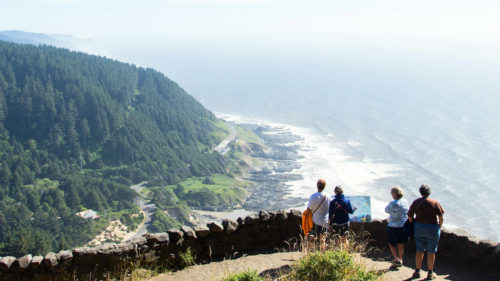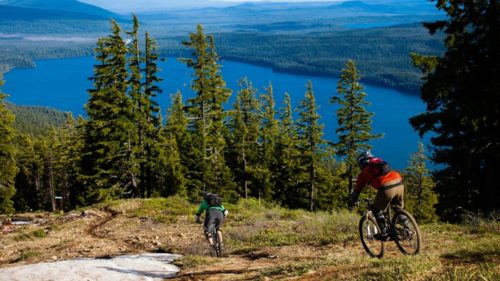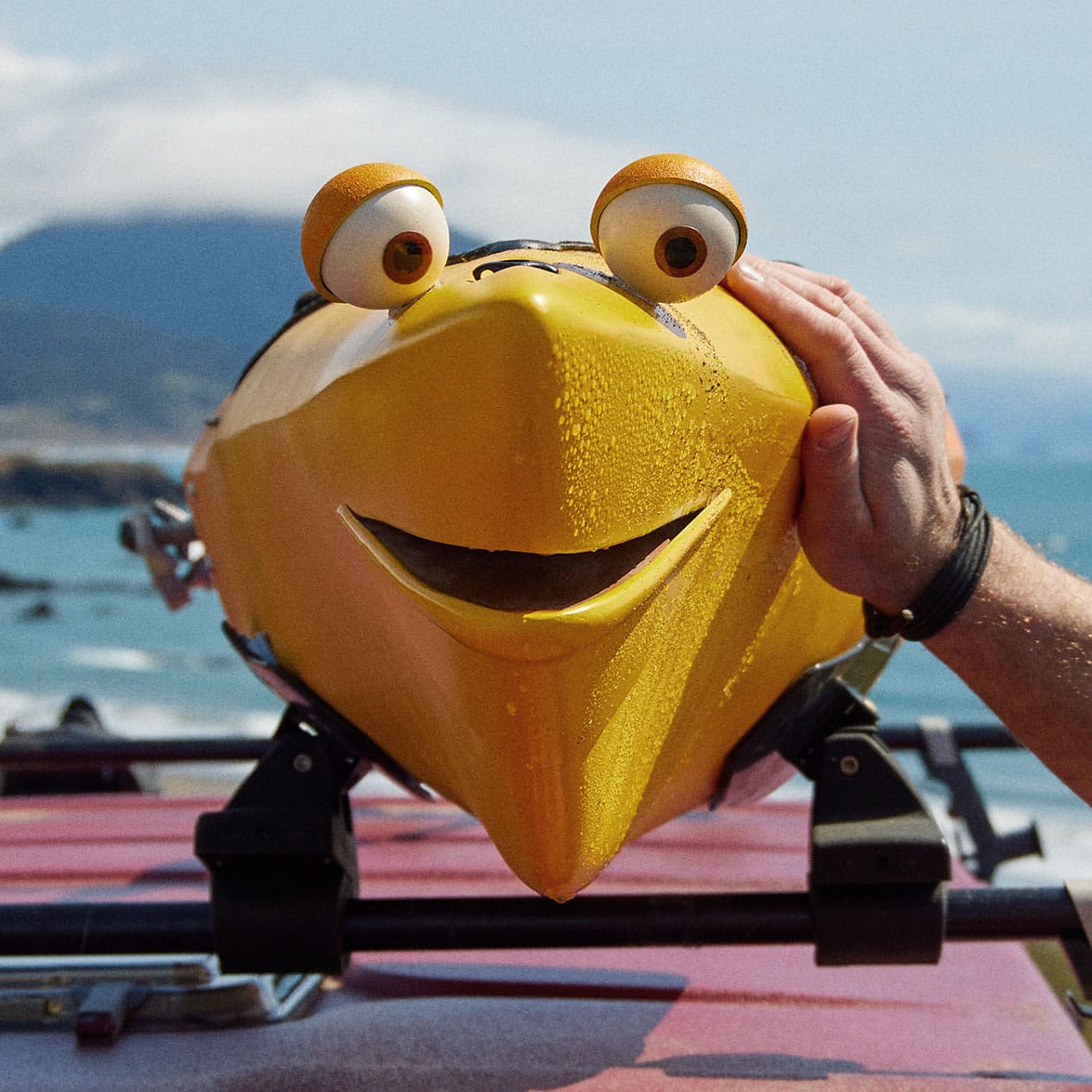As any traveler knows, guidebooks are invaluable, but there’s always a catch-22: They’re often quickly outdated. Bill Sullivan thought of a brilliant solution to this. The Eugene-based author of the iconic “100 Hikes in Oregon” series offers a free autographed book to the first reader who sends an update to a guide he’s just published, whether it’s about a missing bridge or a closed trailhead.
Sullivan immediately vets and posts the updates on his website, OregonHiking.com, making it an authoritative resource for trekkers on Oregon’s trails — whether it’s a wildflower-spotting day hike or a remote backcountry sojourn.
“It started as a way to deflect criticism when somebody came back from a hike and a trailhead moved,” Sullivan says of the books-for-tips approach. “I’ve turned my critics into my biggest fans. I wound up with an army of spies doing the preliminary research.”
Another thing that sets Sullivan’s guidebooks apart: He’s personally trekked every trail he has written about, starting with his 1,361-mile solo trek across Oregon in 1985. “I did every trail I could find in Oregon,” he says.
Since then he’s created a system of re-hiking the trails on a seven-year schedule to inform a new edition of the guide. Last year he did the Portland area. In 2020 he’s headed to re-hike the Wallowas and Steens Mountain in Eastern Oregon. Don’t expect to find his guidebooks on any other state: He’s dedicated to his home state of Oregon only, through and through.
“I’ve really learned from other guidebooks — they’d write a book about one state, then move on to another state and never go back,” Sullivan says. “After 30 years, their guidebook to the state was still on the shelves and it was 50% wrong. It was a dangerous book. I figured in one lifetime I can do one state and do it well.”
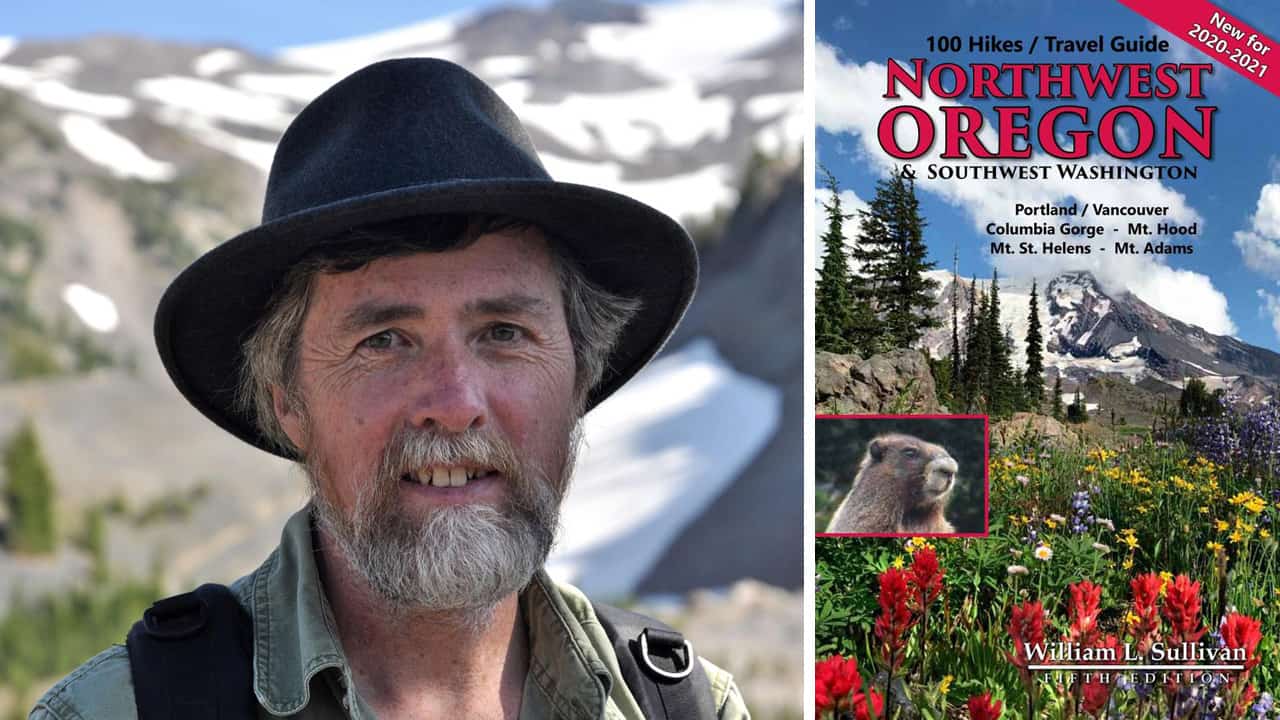
Hiking as Nature Therapy
Being a guidebook writer had never been his goal in life. A fifth-generation Oregonian whose father was a newspaper editor in Salem, he studied creative writing at Cornell University and started writing novels.
While he was waiting for the publisher to respond to his first novel in 1985, he decided to embark on his epic quest across Oregon, thinking he could get two books out of it: an adventure story and a hiking guide.
He ended up finding success with both styles. Sullivan published a journal of his trek across Oregon as “Listening for Coyote” in 1988. It topped the New York Times’ year-end list of travel books and was chosen as one of Oregon’s “100 Books,” which includes the most significant books in the state’s history. “It branded me as the hiker guy; I went with that,” he says.
If you’ve lived in Eugene or Salem, you’ve likely read Sullivan’s monthly outdoor columns for the Eugene Register Guard, Salem Statesman-Journal and Eugene Weekly, inspiring a generation of Oregonians to get outside.
“Hiking is about the best thing you can do,” he says, “not just physically — although we all need to get out and move more — but it’s mental. Everyone needs to get out in nature and reset their minds to the real world, and forget a lot of our troubles back in the city.”
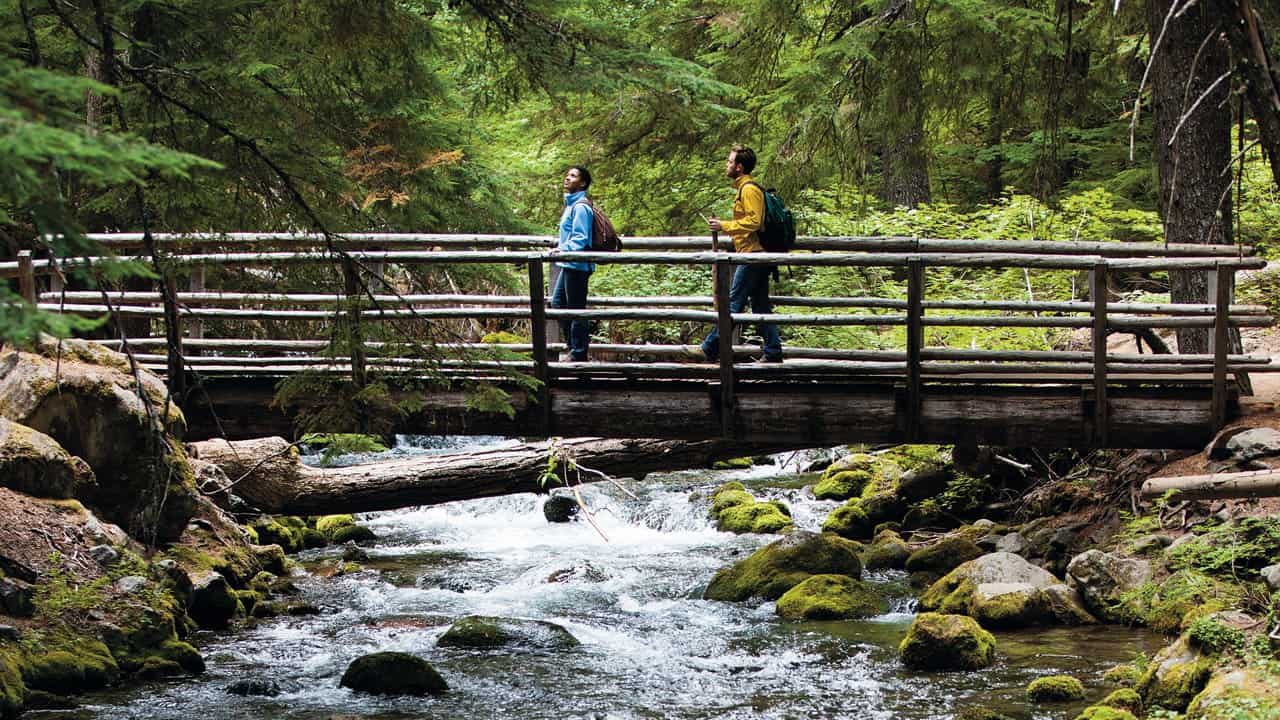
Creative Inspiration at Play
Sullivan has made a routine of hiking all summer and carving out a few months of the year with his wife, Janell Sorensen, to write in the coastal log cabin they built by hand over 25 years, raising two children in the process. The cabin is designed for ultimate solitude — there’s no access road, so you have to hike a mile and a half to get there. Sullivan knows it’s cliche, but it’s true: “I’ve traveled the world, but I haven’t found any place I like as well as Oregon.”
Sorensen is an artist who accompanies Sullivan on nearly every hike. “We go together, and she’ll turn back at the lake and I’ll go to the mountain,” he says. “She has a sketchbook and watercolors and says, ‘I’m going to stop here and sketch this.’ It’s code for ‘I’m tired.’” They come home with beautiful watercolor paintings, some of which she uses for book illustrations or greeting cards.
Sullivan gets to exercise his creative muscles, as well. A true observer of the world around him, he’s penned three adventure memoirs based on his real-life experiences (including “Cabin Fever,” the story of building his log cabin by hand). He’s also written three historical novels and three mysteries that spin entertaining tales based on bizarre pieces of history, like the unsolved heist of D.B. Cooper in the 1970s and the Bhagwan Shree Rajneesh cult that occupied Eastern Oregon in the 1980s.
Add a couple of history books, a play and a collection of short stories (most based on real-life Oregon locations — perfect for the armchair traveler) to the mix, and Sullivan can nearly fill a small bookshop with his work.
Taking the Trail Less Followed
Sullivan believes his books have remained relevant over the past 30 years because they’re easy to use, they’re engaging and they provide trusted information — which is crucial to hikers. “It’s got to be accurate, but it has to be entertaining and tell a story,” Sullivan says. “It has to make you want to go explore that trail.”
Over the decades, Sullivan has seen trails become overcrowded as visitors flock to locations highlighted in social media or popular magazines. “It got to the point that we had a few trailheads near Bend with 500 cars near the trailhead, parked illegally for a mile in each direction. It’s no fun, and not pretty anymore,” Sullivan says. “If people would go to my books, they’d find another 999 interesting trails that are often just as beautiful and completely uncrowded.”
The latest version of Sullivan’s Central Oregon Cascades guidebook describes the Central Cascades Wilderness Permit system required for several popular hikes in the Mt. Jefferson, Mt. Washington and Three Sisters wilderness areas of Central Oregon. The permits are designed to address overcrowding in peak-season months.
You can hear Sullivan talk about his books, his adventures and his favorite trails at one of about 60 public appearances for hiking groups and the public across the state. His calendar is, of course, kept updated.
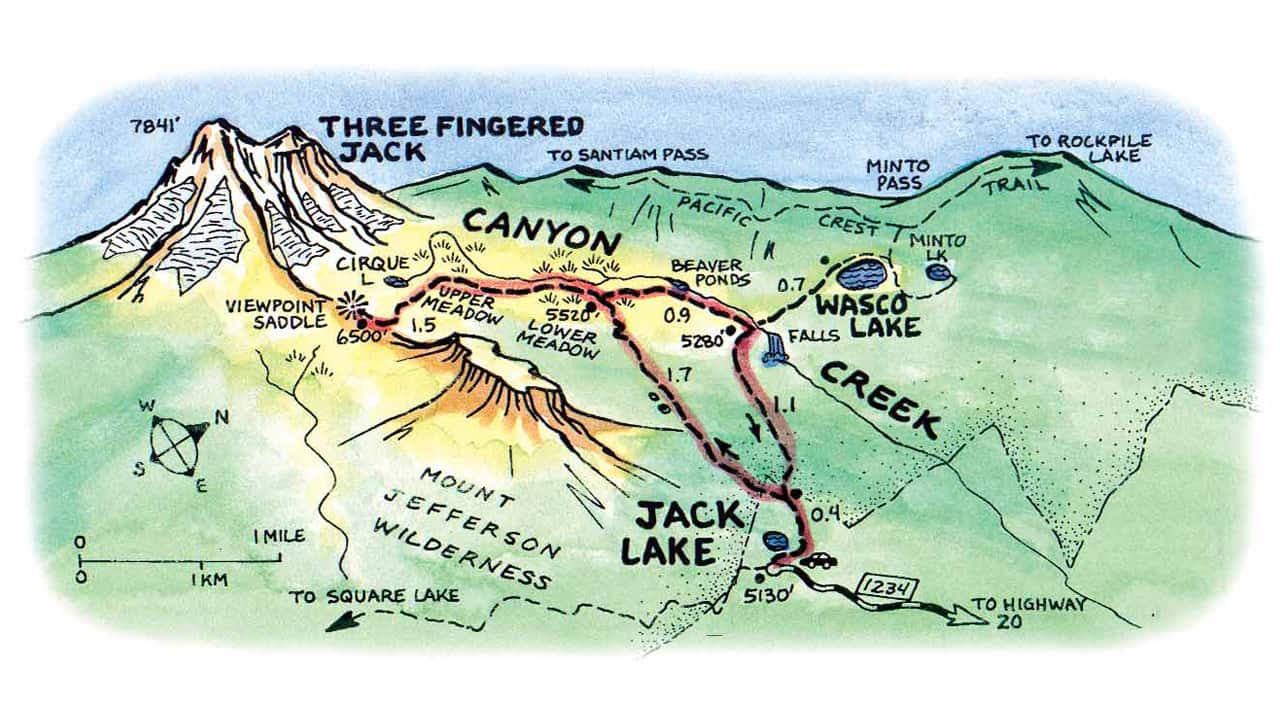
If You Go:
The backpack-ready books are more than just mile-by-mile guides. Each includes short, engaging write-ups and hand-drawn maps for 100 top hikes he’s selected, as well as a bonus 100 hikes listed in the back — just in case you run out of ideas. Find some of Sullivan’s top hikes in the Mt. Hood Area, Eastern Oregon, Southern Oregon, the Central Oregon Cascades and the Coast Range. Find more ways to Take Care Out There in Oregon’s natural areas.
